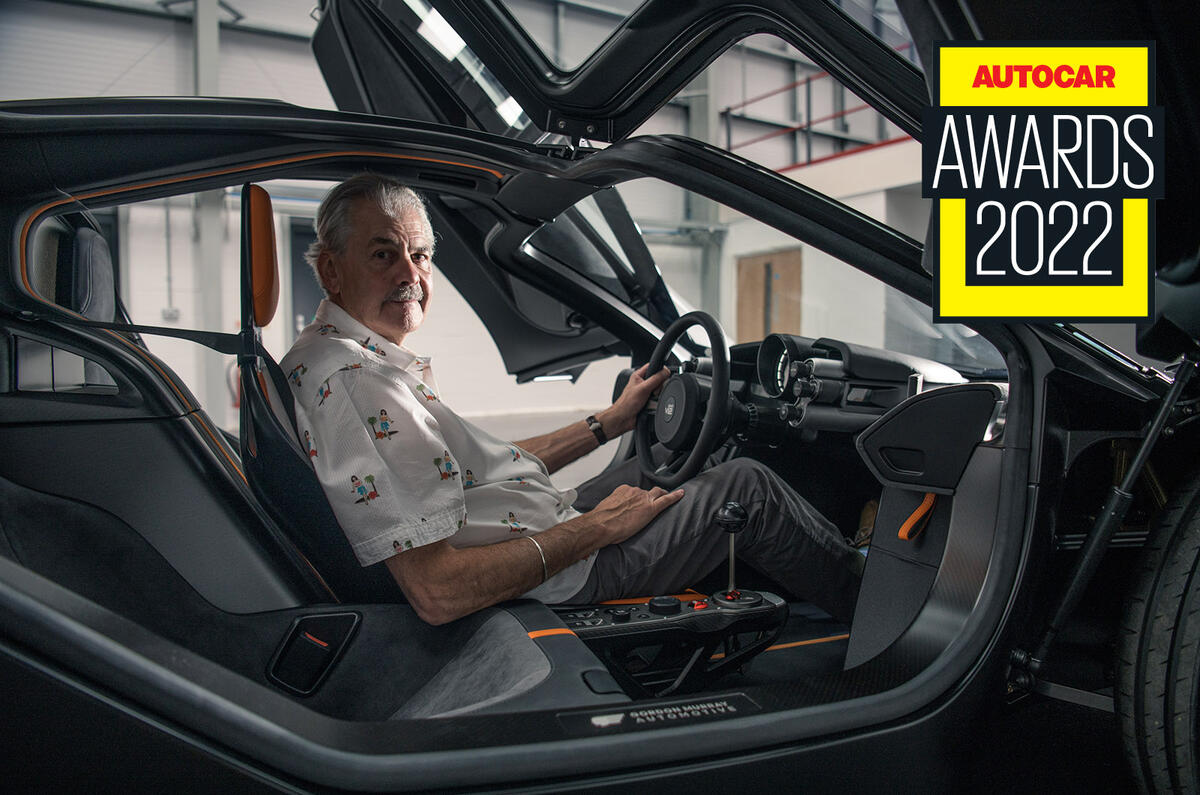Gordon Murray, the distinguished winner of Autocar’s Mundy Award for Engineering, was always destined to become an engineer, even though neither he nor his family realised it in his early years.
Born in Durban, South Africa, Murray lived until he was 15 in modest circumstances: a family of four in a small, single-bedroom flat. Money was so tight that conventional toys were out of the question, so aged eight or nine, young Gordon’s idea of fun was to mock up spaceships and submarines with creatively arranged blankets and dining-room chairs and then invite neighbourhood friends to enjoy them.
Read more on all the Autocar Awards winners here
He soon became known as “the inventor on the block”. When he won a course of drawing lessons in a school competition, his teacher spotted an obvious technical ability (his sketchbooks were filled with well-informed sketches of cars and aeroplanes), so she suggested he study technical drawing, the true beginning of everything. It soon seemed natural for him to move to Natal Technical College (his graduation project was a complete engine design), and by the time he was 20, he had designed his first car, lower and lighter than a Lotus Seven, which he raced for a couple of years.
By 23, he had decided that his career would advance better in the UK. By 25, he was chief designer at the Brabham Formula 1 team (owner Bernie Ecclestone summarily fired the rest of the design staff). And by 28, he was technical director, running the whole operation. Murray’s ascent soon became even more dramatic: in an F1 shark pool containing luminaries like Colin Chapman and Frank Williams, his cars won five F1 manufacturers’ titles and 50 grands prix for Brabham and McLaren over two decades, until winning became almost routine.
Then came a 1990 plan to launch a McLaren road car company, whose first product was the seminal F1. Two Le Mans 24 Hours wins for the race version followed. Then in 2003, the Mercedes-McLaren SLR arrived. Frustrated by corporate control, Murray left in 2007 to establish his own firm, Gordon Murray Design, a move that led to an expanded Gordon Murray Automotive able to bring ideas into reality.
A wide range of imaginative concepts and processes has resulted, many for secret clients. The latest headline-grabbers under Murray’s own name are a pair of lightweight, brilliantly packaged V12 supercars in the F1 mould: the GMA T50 ‘fan car’ and the slightly cheaper and slightly simpler yet no less desirable GMA T33.
For all of his achievements, Murray has always taken a very practical view of the purpose and status of engineering.




Add your comment